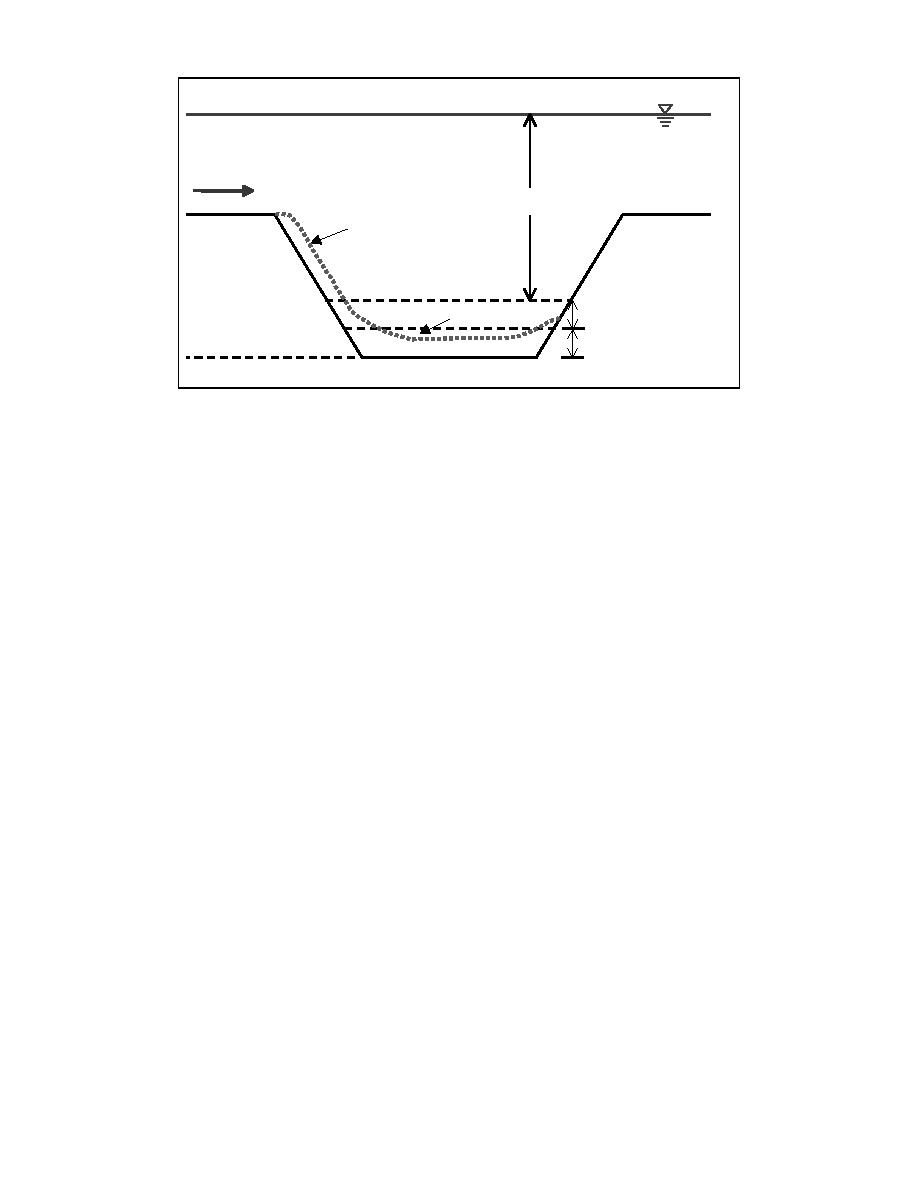
Chart
Chart Datum
Direction of
Predominant Transport
Design
Cross Section
hp
Bank
Encroachment
Project Depth, hp
Deposition
Advance Depth
Depth Immediately
after Dredging
Allowable Overdepth
Fig. 1. Schematic of channel infilling by encroachment and deposition
Referring to Fig. 1, navigation can be limited by bank encroachment, typically as
intrusion of a spit, shoal, or sand wave into a channel, or through deposition of sediment
along the bottom of a channel. If some minimum width is reached or if the channel bottom
grows above project depth, maintenance dredging is necessary. Dredging requirements
must be estimated in the design and modification of channels. Deepening and widening
may be done under a plan of advance maintenance to reduce dredging frequency, cost, and
environmental impact. Savings can be accrued by reducing the number of mobilizations,
demobilizations, and channel-condition surveys, or by scheduling dredges when equipment
can be shared among projects. Advance maintenance may also be considered to take
advantage of favorable weather windows, either to reduce the cost of dredging or to
maintain the channel through storm seasons when maintenance is more expensive or risky.
Several procedures have been proposed for calculating channel deposition, and only a
few are mentioned here. Trawle (1981) developed an empirical method based on dredging
data for a site. Simplified calculation methods have be given by Gole and Tarapore (1971)
and Galvin (1982). Of these, the Galvin (1982) procedure depends on readily available
information and accounts for an along-channel current. Foreman and Vallianos (1984)
applied the Galvin (1982) method to estimate performance of a channel at Oregon Inlet,
North Carolina, USA. More sophisticated models have been developed that represent the
acting micro-scale processes, including the vertical profiles of flow and sediment
concentration, as well as flow separation (Kadib 1976; Van Rijn 1991; Walstra et al. 1999;
van de Kreeke et al. 2002). Despite the availability of these and other calculation
procedures, a clear and simple mathematical description of channel infilling and bypassing
appears to be lacking. In addition, a procedure is needed that represents bank
encroachment as well as sediment deposition.
This paper introduces a simple morphologic mathematical model that describes the
basic processes of channel bank encroachment and channel deposition as produced by
cross-channel sediment transport. An analytical solution of the model equations obtained
under reasonable assumptions reveals physical dependencies of channel behavior. The full
model is readily extended to more complex situations by numerical solution.
Kraus and Larson
2




 Previous Page
Previous Page
